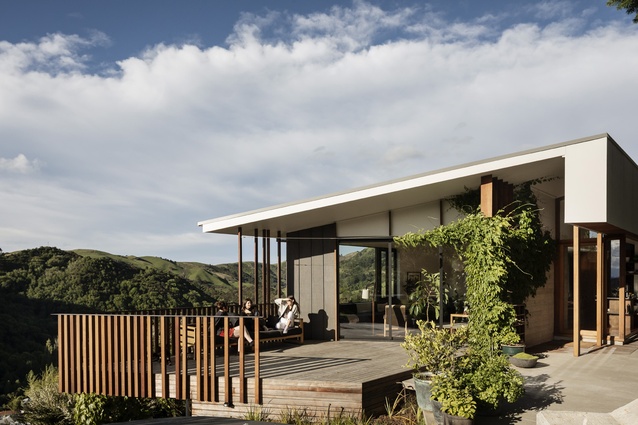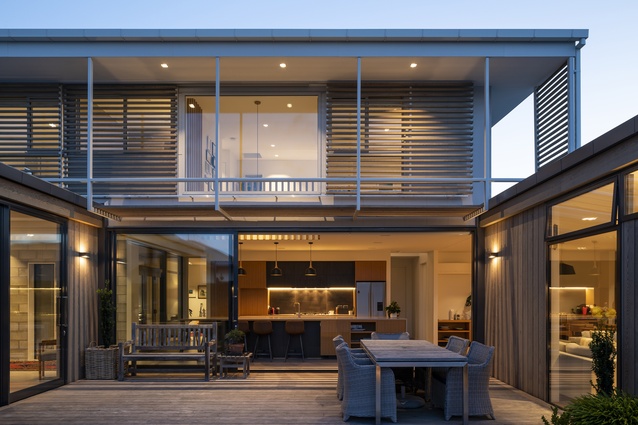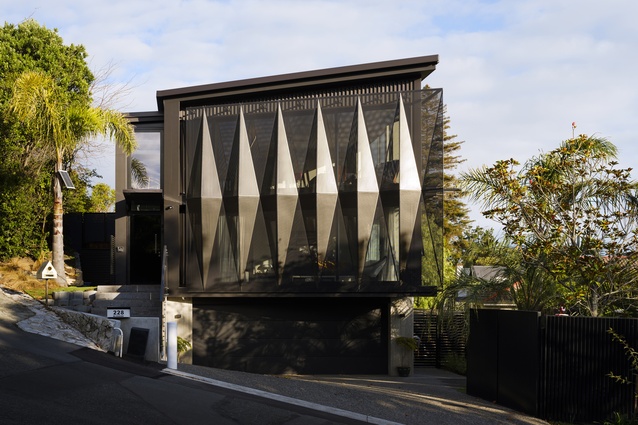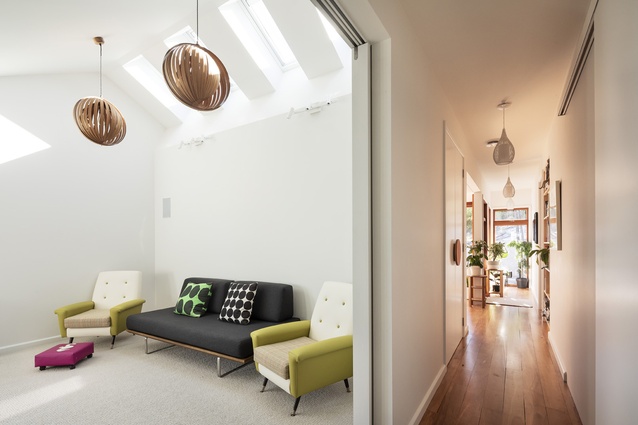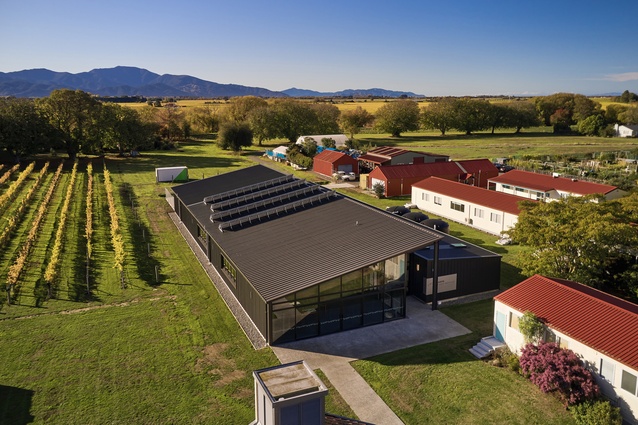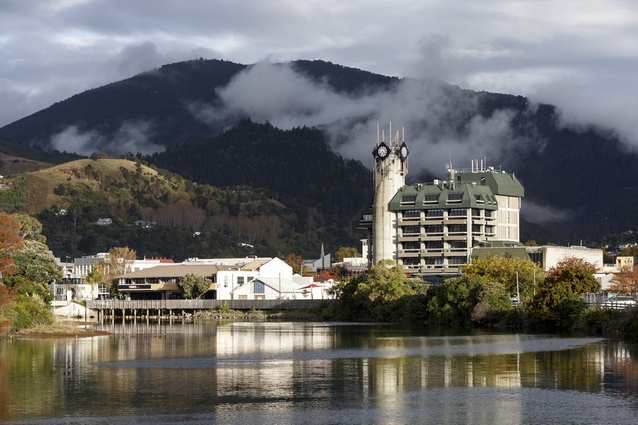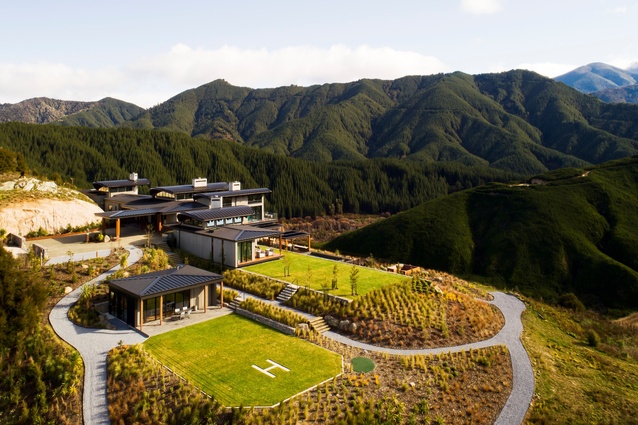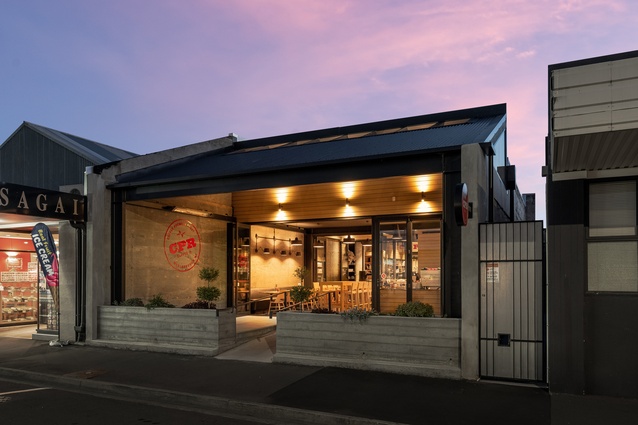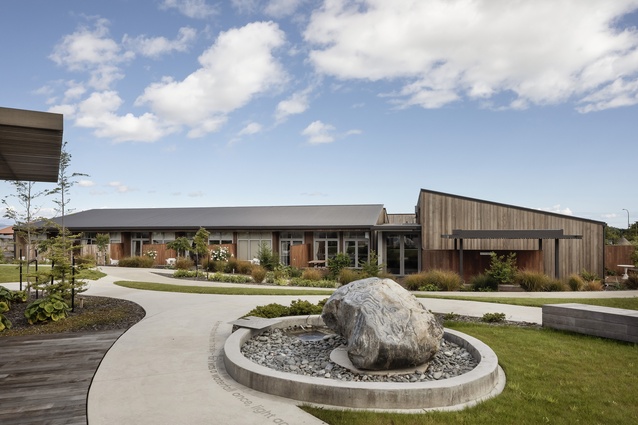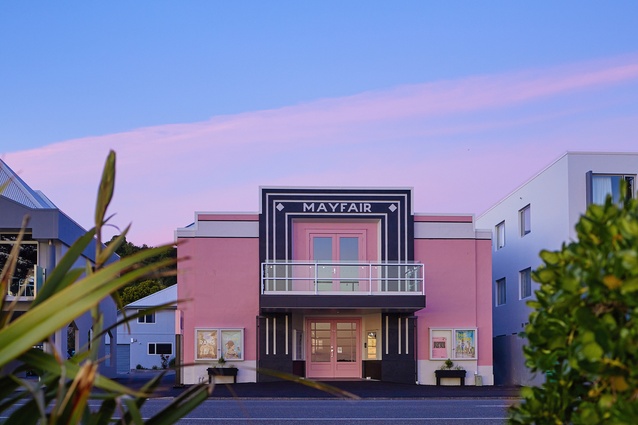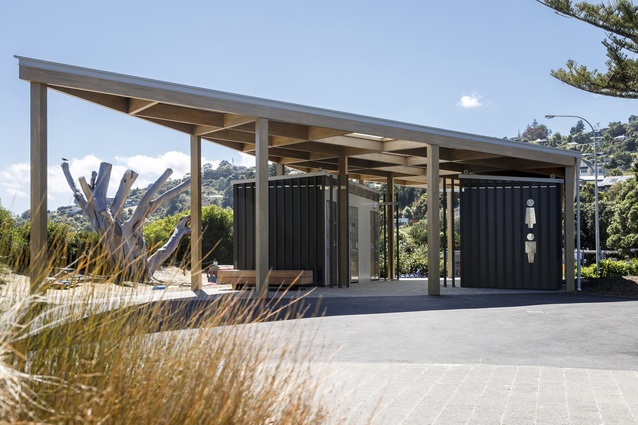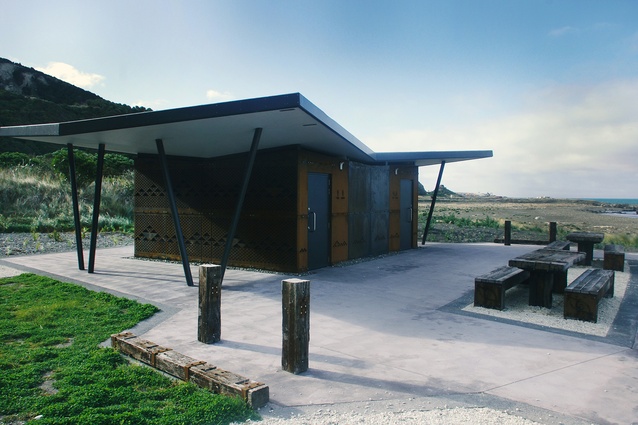Winners announced: 2021 Nelson/Marlborough Architecture Awards
Te Kāhui Whaihanga New Zealand Institute of Architects (NZIA) has revealed 12 winners in the Local Awards for the Nelson and Marlborough regions, including one Enduring Architecture award.
Held in Nelson, the peer-reviewed awards programme was convened by William Samuels of William Samuels Architects, who was joined on the jury by Rachel Dodd of Arthouse Architects, Sally Ogle of Patchwork Architecture and Myles Montgomery, a creative director based in the region.
“After a year that required us to reflect heavily on the nature of our social interactions, it’s heartening to see so many works that facilitate public engagement”, Samuels said. “From a new hospice to an arts centre and humble public restrooms, each project was notable for its contribution to the wider community.”
See the full line-up of winners below with jury citations.
Housing
Feather House by Irving Smith Architects
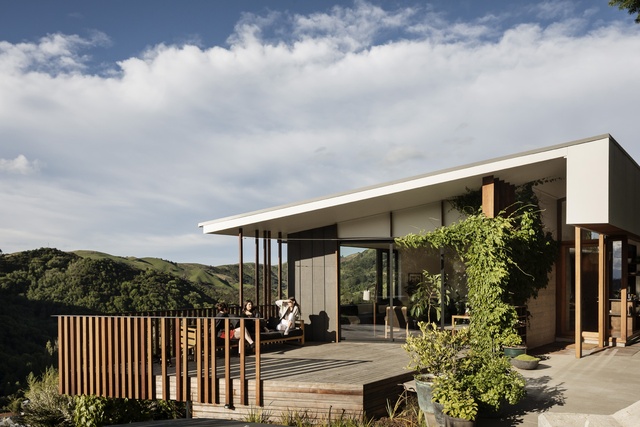
This house is a testament to the relationship between the builder-client and architects, who have together created a warm, welcoming house that reflects the collaboration of its creators. This modestly sized home, situated on an impressive, elevated site above Nelson, has a kitchen hub at its centre and tapered ends that feather out to external spaces. Living areas are oriented for different times of day, wind directions, sun, and offer a choice between expansive view or cosy retreat. Every space and detail has been carefully considered and crafted, often with relatively prosaic materials used in unexpected ways to produce a delightful outcome.
Pivot House by Borrmeister Architects
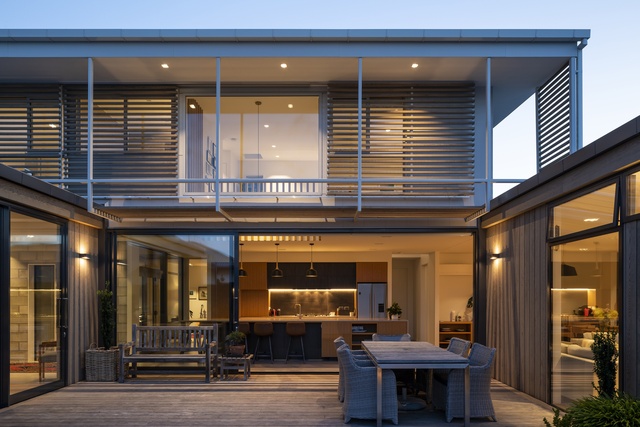
Pivoting around an open kitchen, this home’s internal areas are spacious, engaging and designed to harness both light and ventilation from all available aspects. Composed of a set of rotated pavilions, the house’s resulting negative spaces provide generous outdoor living areas for enjoyment of beautifully landscaped gardens. One can easily see how the inhabitants might move through the home as the day begins, enjoying morning light on the front deck and tending to the vege garden, before retreating from the heat of the day, then entertaining into the evening.
Collingwood Street House by Jerram Tocker Barron Architects
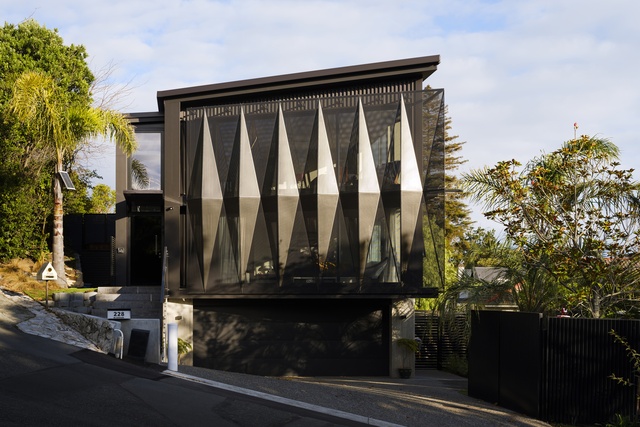
In response to their client’s request for “a box with a pool”, the architects have delivered just that, albeit a skilfully executed box that rises above the constraints imposed by its steep and challenging site. This is a generous home that belies its small 330m2 site. Stretching over three levels in an effectively arranged plan, the home’s clear zones take advantage of a northern aspect and views over the city. A folded, perforated screen across the facade works hard to address shading and privacy concerns while doubling as a fall protection barrier for the internal rooms. In a design reminiscent of infill housing in cities of greater density than Nelson, the Collingwood Street House provides an example of a typology that is rarely seen but sorely needed in the region.
Housing – Alterations and Additions
Tahunanui House by Irving Smith Architects
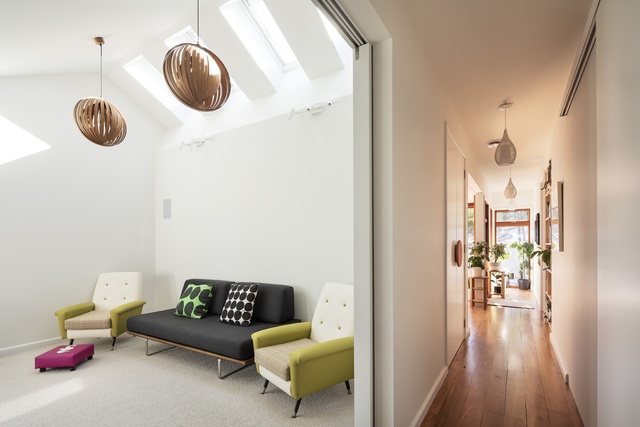
A 12-year project that incorporated two main stages and many more smaller moves, Tahunanui House embodies the adage that good things take time. This family home is full of personality and life, and has been cleverly lengthened and reconfigured to create a light-filled, welcoming refuge. A new entry provides privacy by removing the previous pathway past bedrooms, while glazing and skylights from secondary living spaces cue the circulation route. The expansion and contraction of space ensures there is room for everyone to connect, while also allowing for retreat. This is a clever, beautiful response which reflects the close relationship between architect and client.
Commercial Architecture
Bragato Research Winery by Jerram Tocker Barron Architects
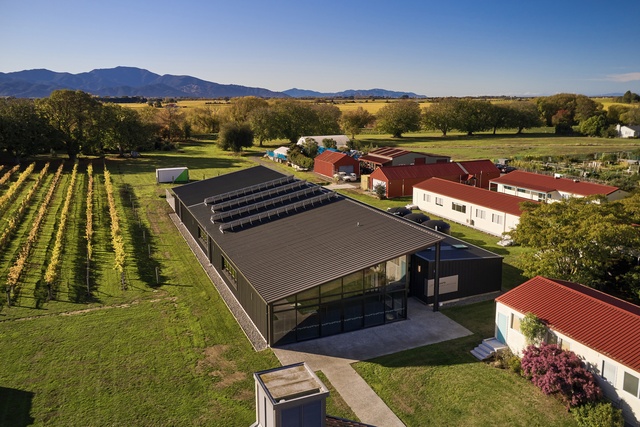
An architecturally simple form hides a sophisticated programme that facilitates the changing nature of the research work taking place within. Simple moves such as windows at the perfect height for overlooking the vines outside elevate this building to the status of an ‘elegant shed’. Temperature control and running costs are critical functions of the building and these have been carefully considered as part of the architecture. It is admirable to see an architect so knowledgeable about the environmental impacts of their design and how these have been worked through. This project is part of a wider masterplan, which is currently under construction, and we look forward to seeing it sit within that landscape.
Enduring Architecture
Civic House (1983) by the Ministry of Works (architect John Rowe) and Athfield Architects in association
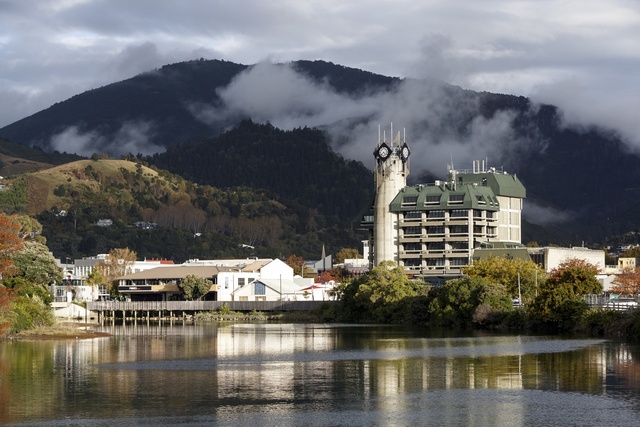
In a CBD more typically populated by bland commercial developments and tired older buildings, Civic House speaks a different language with character, honesty and a unique identity. The robustness of its late Brutalist forms may not win universal approval, but there is an integrity in its materiality that reveals a higher level of architectural consideration. There are moments of almost sculptural expression, most notably through the external structural grid, the deeply cantilevered mansard roofs and the off-form concrete clock tower. At six stories, the building’s scale and bulk is uncompromising, yet also idealistic, hinting at a future where Nelson grows beyond its provincial roots. Almost 40 years since it was constructed, Civic House continues to evoke strong emotions and remains as controversial today as when it was first conceived.
Hospitality
Falcon Brae Villa by Jerram Tocker Barron Architects
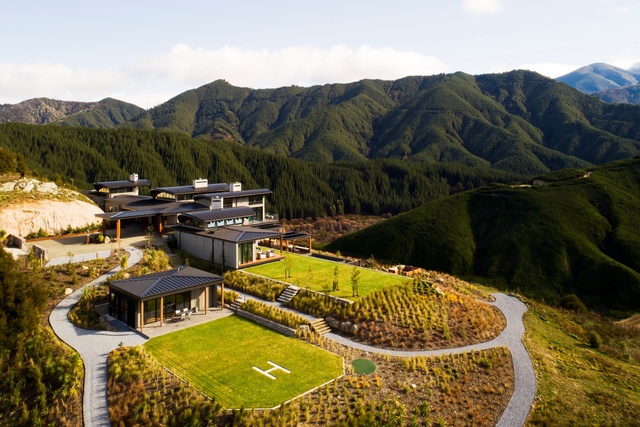
Nestled into the granite hillside of the Motueka River Valley, this elegant addition to New Zealand’s luxury lodge offer provides a unique experience for a touring family. With greyed cedar cladding that reflects its natural surroundings, this building will further recede into the mānuka over time as significant revegetation efforts start to take root. Inside, spacious suites are arranged to exploit the stunning aspects of the surrounding river valleys and Kahurangi National Park, while the sweeping roof structure provides a clean and evocative fifth elevation when viewed from the walking tracks above. This is a building that acknowledges and meets the high standards set for it, with function, landscape and architecture each finding fullest expression at this luxurious secluded retreat.
CPR HQ by Rural Workshop Architecture
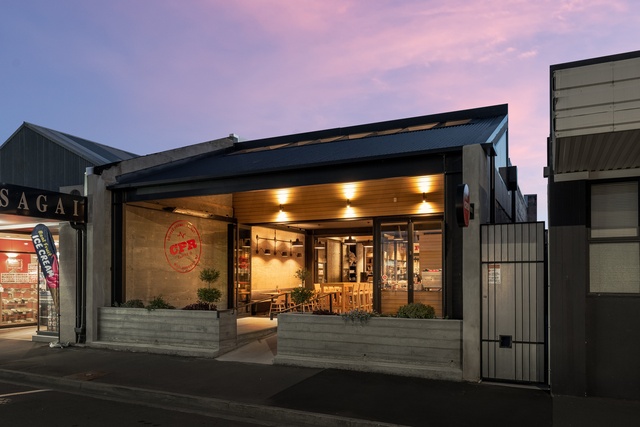
A narrow lot in Blenheim’s CBD has become a vibrant coffee roastery and cafe thanks to simple yet effective interventions by the architects who, despite a limited budget, made all the right moves. The existing building required significant seismic upgrades along with modifications and replanning to address its limited natural light and amenity. A new internal courtyard provides a lightwell that draws the sun and air into the heart of the building and creates a sheltered dining area where exposed concrete walls and new seismic steelwork provide a raw and honest aesthetic. Most significantly, by removing the original facade and setting the new glazing line back from the street edge, the architects have allowed light to penetrate deep into the building, and created a generous covered front terrace - an important urban gesture that creates a new public gathering space and a lively interface with the street.
Public Architecture
Nelson Hospice by Irving Smith Architects
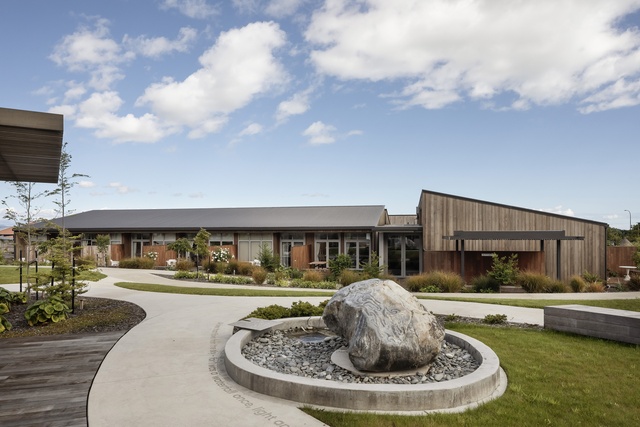
This building is the culmination of a huge collaboration between the clients, architects, consultants, contractors and sub-contractors. Conceived as a single-level complex of residential forms, fitting for its suburban context, this generously scaled facility provides space for all the whānau. Rooms have been designed to minimise that clinical feel, while maintaining all the functionality required. Expansive landscaping around the site is enjoyed via private decks and internal courtyards that provide daylight, ventilation and wayfinding. This is a thoughtful, considered building that provides an exceptional level of palliative care, as well as allowing for community education and pastoral care. The architects have succeeded in creating a place that is inviting, uplifting, and healing, and a huge asset for the region.
Mayfair Arts and Culture Centre by Irving Smith Architects
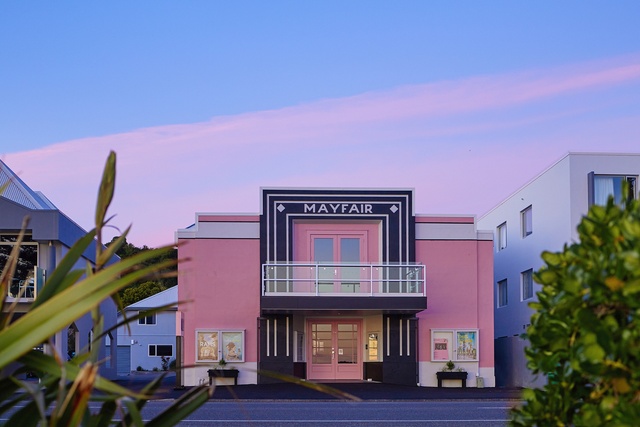
While seemingly simple, this project had a sophisticated brief - to reinvent the earthquake-damaged Mayfair Cinema as a multi-purpose cinema, theatre, gallery and conference venue, and ensure it lasts another 90 years. The architects have cleverly responded to these multifarious demands, creating a comfortable, functional, hard-working building. A key addition was a terrace at the upper level to take advantage of the theatre’s waterfront site and add life to the facade. Archaeological finds that added significant complexity to the build were worked through simply and quickly - a testament to the architects and clients, and their strong relationships with the wider community.
Resene Colour Award
The candy-pink facade of The Mayfair has become the basis for its brand, from website and posters down to business cards. The decision to retain and express the original pink surface was a significant placemaking gesture and one of the most important moves made in the redevelopment and restoration of this heritage building.
Small Project Architecture
Tahunanui Lions Toilet Block by Jerram Tocker Barron Architects
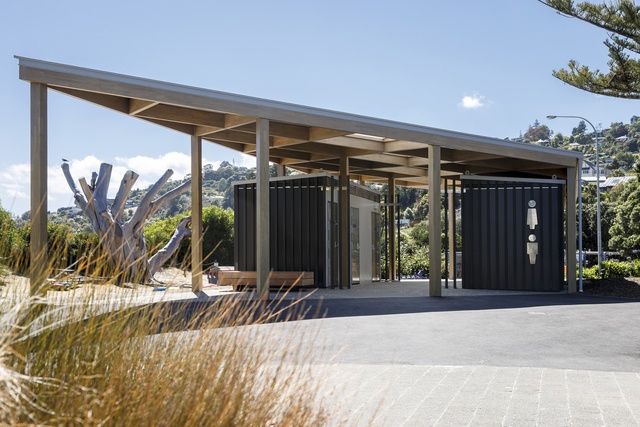
The Tahunanui Lions toilet block strikes a perfect balance between function, shelter, amenity, and accessibility. The project is grounded by the functional aspect of the two banks of toilet blocks, which provide shelter for those escaping the prevailing breeze. Above sits a light timber diagrid canopy structure, which echoes the paving array to great effect. Considered detailing and materials elevate the canopy beyond a purely utilitarian structure and toward something more expressive.
Kaikōura Highway Public Amenities by WSP Architecture
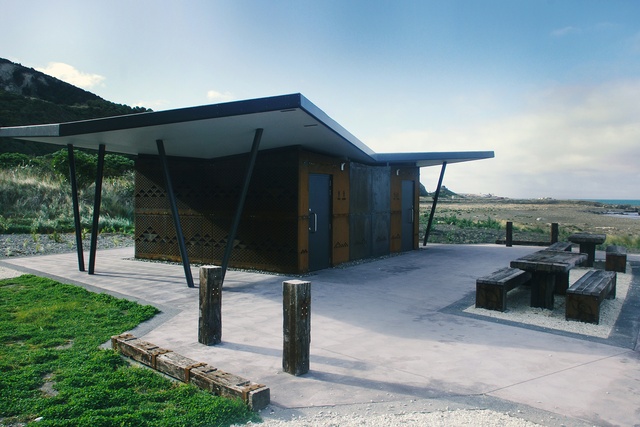
Strung along the rebuilt Kaikōura coastal highway, these new amenity blocks show a considered, cohesive response to the overall landscape language developed after the 2016 Kaikōura earthquake. The architects worked with a manufacturer to adjust proprietary prefabricated units to suit the location and context; the sites are located on narrow margins of land between the highway and the coast. The buildings themselves were envisioned as rocky outcrops and were overclad with patterned corten steel to incorporate a cultural narrative. As a small part of a larger engineering project to stabilise hills and rebuild highways, bridges and tunnels, these amenities are a welcome reminder of the importance of the little things.
The NZIA Local Awards 2021 programme is supported by Resene and APL.

